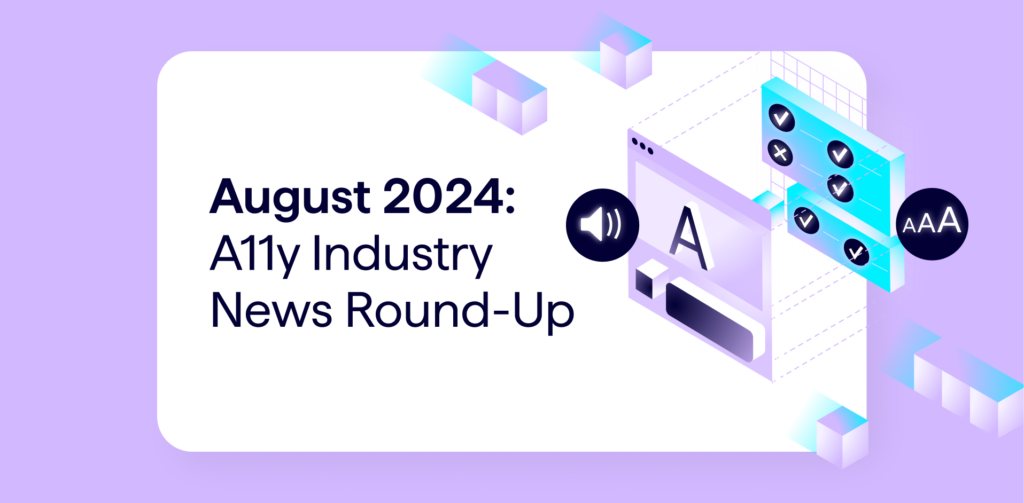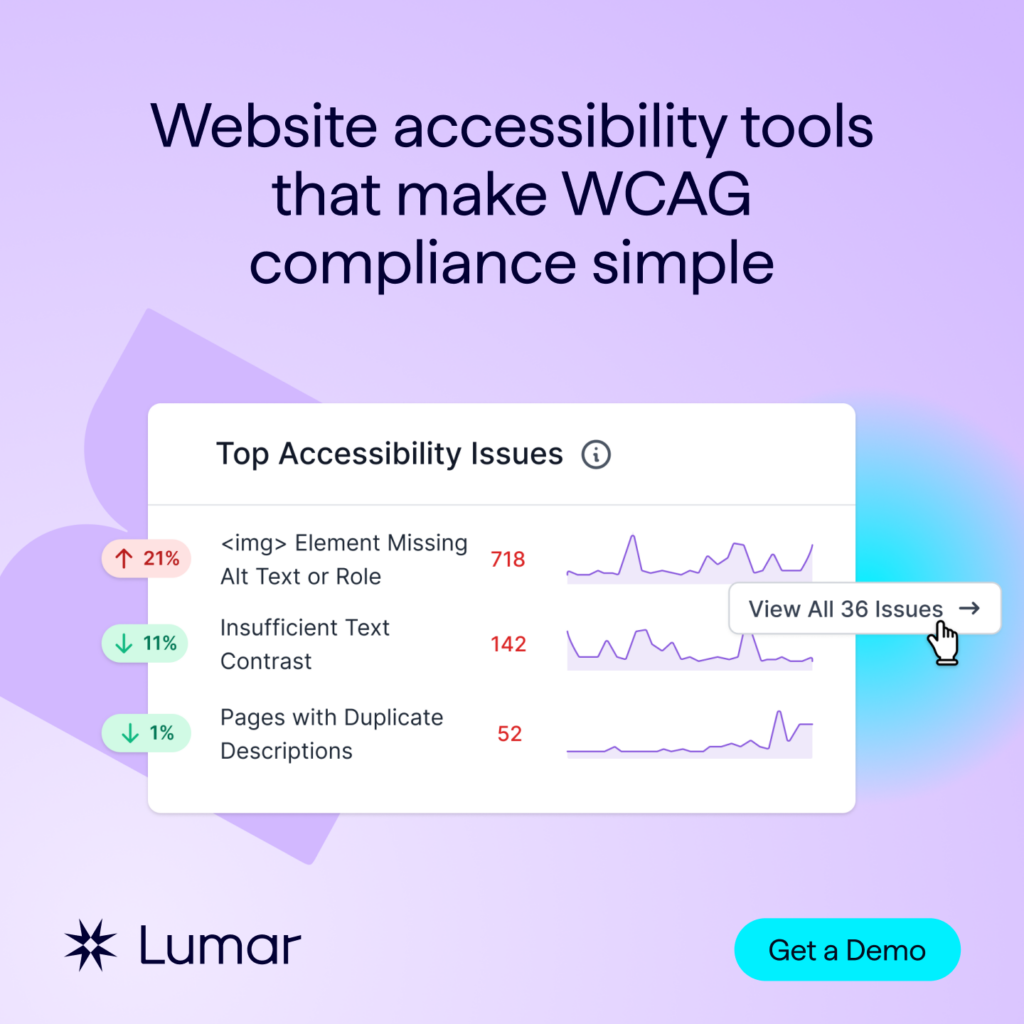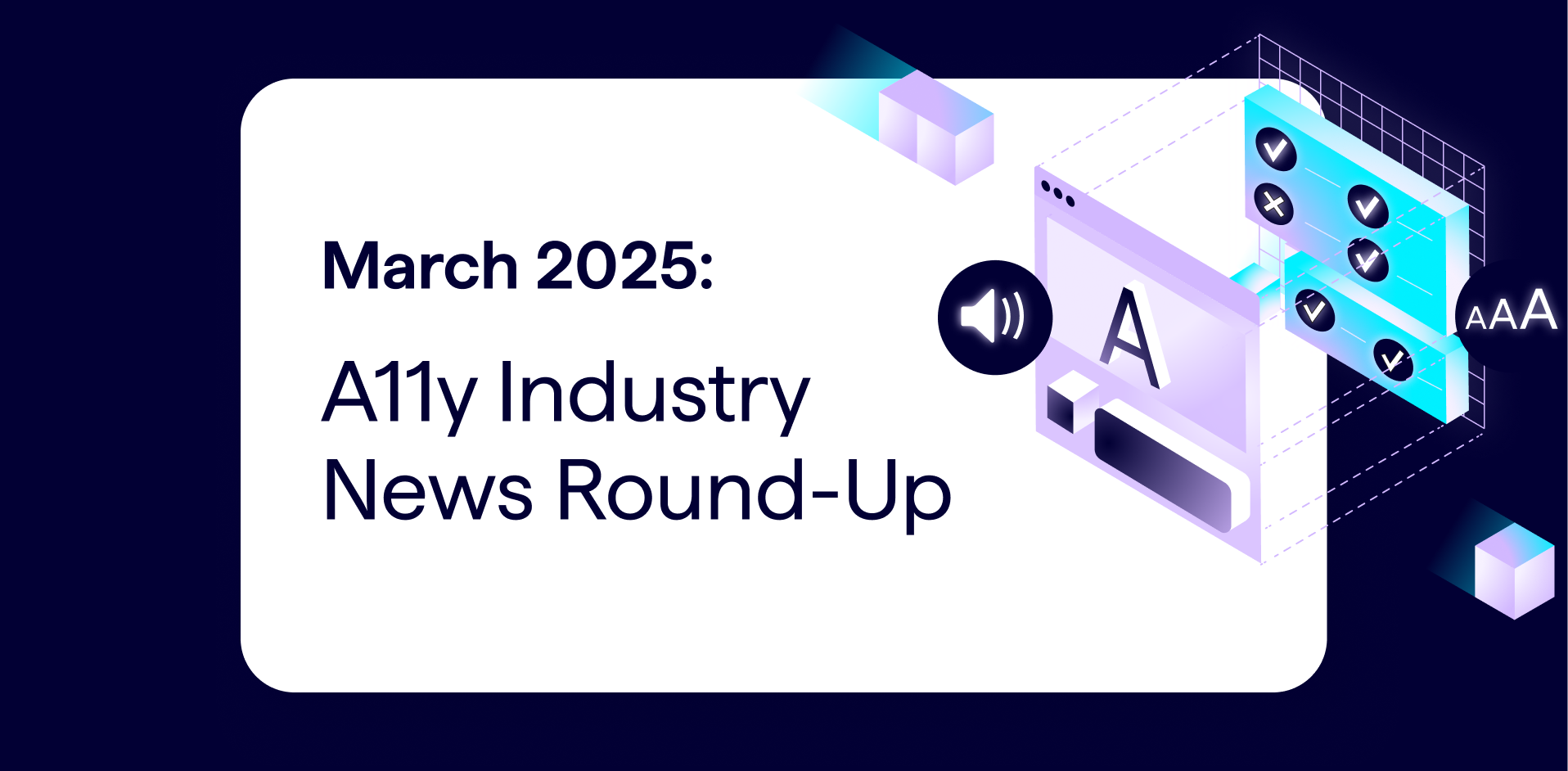What happened in digital accessibility news this month?
Each month, we round up some of the top headlines for web accessibility professionals, with help from our a11y expert friends at QualityLogic.
This month, our accessibility news roundup includes:
- More class action lawsuits were filed in relation to the poor performance of websites’ ‘accessibility overlay’ tools.
- Costly financial impacts are projected for EdTech companies to adhere to new ADA Title II web accessibility rules.
- 94% of European websites studied failed at least one accessibility test, according to a new ‘State of Digital Accessibility in Europe’ report.
- W3C is finalizing its guidance on applying WCAG 2 to non-web information and communications technologies (such as non-web documents and software).
Read on for the top a11y news this month!
AccessiBe faces class action lawsuit over ‘accessibility overlay’ tools
This summer, Tribeca Skin Care filed a class-action lawsuit against AccessiBe, a web accessibility tool provider that supplies ‘accessibility overlays’ that purport to make websites more accessible to users with disabilities. The dermatology practice had received its own class action lawsuit from website users in early 2024 who claimed that the medical practice’s website was not accessible, even with the AccessiBe overlay in place. Following this user complaint, Tribeca Skin Care then filed a lawsuit against AccessiBe this summer, claiming the accessibility tool engaged in breach of contract, breach of implied warranty, and other business law issues.
As the team at QualityLogic has explained before, website teams should be careful about employing accessibility overlays on their domains:
“… There is another popular category of accessibility tools called “overlays” which purport to make the user’s experience more accessible. These tools are widgets that sit atop a website and attempt to fix problems in the rendered code — however, these tools do not achieve full compliance and can degrade the experience for assistive technology users.”
— Clyde Valentine, Head of Growth at QualityLogic
This backlash against website owners using accessibility overlays is nothing new—blind internet users have long pointed out that these accessibility overlay tools are not sufficient for making websites usable and inclusive.
Rather than relying on quick fixes like ‘accessibility overlays,’ Clyde Valentine recommends that website owners pivot to using accessibility analytics platforms to scan for, monitor, and identify accessibility issues at scale across a website in an ongoing manner while pairing that analysis with human-led assessment and resolution of web accessibility issues.
[Sources: QualityLogic News Update and the Law Office of Lainey Feingold]
Costly financial impacts projected for EdTech companies to adhere to new ADA Title II web accessibility rules
The team at QualityLogic recently published an in-depth exploration of new Americans with Disabilities Act (ADA) Title II Requirements, which arose from a recent final ruling from the US Department of Justice (DOJ) that mandates digital accessibility compliance for all US state and government services.
A new white paper (“New DOJ Rule on ADA Title II and Its Impact on EdTech Companies”) published this summer by the Software and Information Industry Association (SIIA) explores the potential financial impact involved with achieving accessibility compliance for education technology companies that work with US schools and universities. SIIA reports that the DOJ estimates a11y remediation costs to conform to its new requirements to be $1.134 billion for K-12 classroom courses and $5.5 billion for postsecondary courses.
[Sources: QualityLogic News and Software and Information Industry Association (SIIA) press release ]
Study: 94% of European websites studied failed accessibility tests
Belgian consulting firm Craftzing studied 260,000 European websites’ homepages to determine accessibility compliance in their recent report, “The State of Digital Accessibility in Europe, 2024”.
They found that 94% of the websites’ home pages failed at least one basic accessibility test for criteria such as color contrast, link visibility, and image alt attributes. And 25% of the pages studied failed on more than three criteria.
This is particularly concerning because new European Accessibility Act (EAA) rules will go into effect in 2025.
[Sources: Techzine and Craftzing’s Digital Trust Index 2024]
W3C is finalizing its guidance on applying WCAG 2 to non-web information and communications technologies
W3C asked that all comments on its draft of WCAG2ICT (“Guidance on Applying WCAG 2 to Non-Web Information and Communications Technologies”) be submitted by August 6, 2024. Now that we’re at the end of the month, all comments on the document should now be submitted, meaning the final version of the guidance will likely be published in the near future.
The WCAG2ICT document describes how the Web Content Accessibility Guidelines (WCAG) principles, guidelines, and success criteria can be applied to non-web Information and Communications Technologies (ICT) such as non-web documents and software.
The document is part of a series of educational documents published by the W3C Web Accessibility Initiative (WAI).
[Source: W3C Group Draft Note ]







